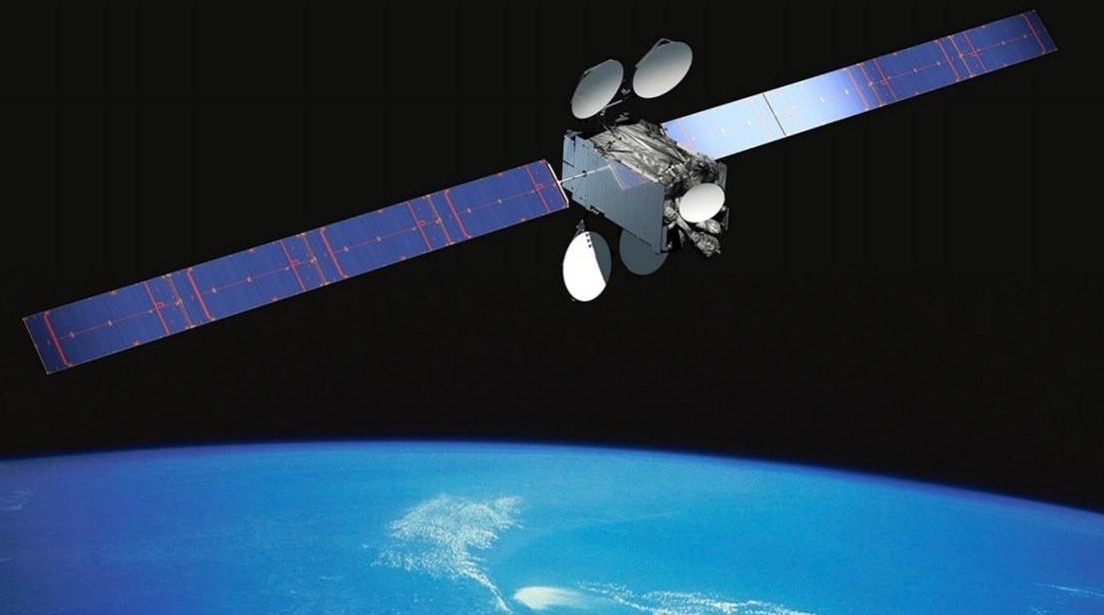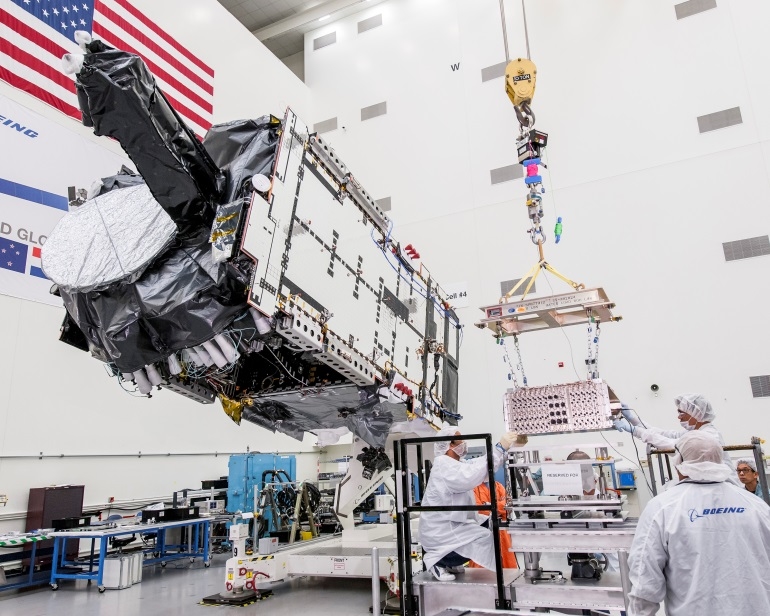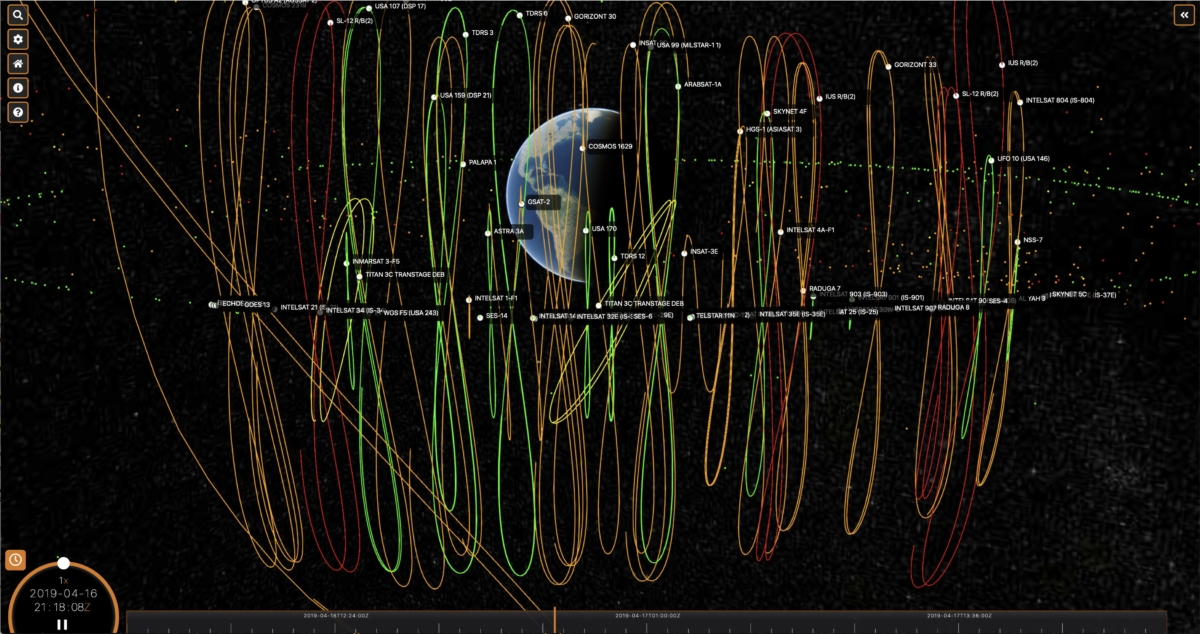
A Communications Satellite Just Died in Orbit. It's Potentially Dangerous Space Junk Now
IS-29E could pose a threat to other satellites in geostationary orbit, experts say.

Luxembourg-based Intelsat reports that its Intelsat 29E satellite (IS-29E) is now a total loss, after having reported earlier that the spacecraft suffered an anomaly.
Late on April 7, the Intelsat 29e propulsion system experienced damage that caused a leak of the propellant on board the satellite, resulting in a service disruption to customers..
That event caused a service outage on the Intelsat 29e satellite that affected maritime, aeronautical and wireless-operator customers in the Latin America, Caribbean and North Atlantic regions.
Related: Satellite Quiz: How Well Do You Know What's Orbiting Earth?
While working to recover the satellite, a second anomaly occurred, after which all efforts to recover the satellite were unsuccessful, Intelsat representatives said.

Affected customers
"Since the anomaly, Intelsat has been in active contact with affected customers," the global satellite operator said in a statement.
"Restoration paths on other Intelsat satellites serving the region and third-party satellites have been provided for a majority of the disrupted services. Migration and service restoration are well underway, highlighting the resiliency of the Intelsat fleet and the benefit of the robust Ku-band open architecture ecosystem," the statement explained.
Get the Space.com Newsletter
Breaking space news, the latest updates on rocket launches, skywatching events and more!
Quite troubling
Intelsat's declaration of IS-29E a total loss "means it will continue to drift uncontrolled along its current orbit in GEO [geostationary orbit]," said T.S. Kelso, the operator of CelesTrak, a leading source for orbital element sets and related software to keep an eye on satellites and orbital debris.
Kelso tweeted on April 16 that the current situation with IS-29E "continues to be quite troubling," with the satellite spiraling around its spacecraft siblings IS-11 & IS-32E. Additionally, there are reports of 13 pieces of associated debris, he said.

Nightmare scenario
In an earlier tweet, on April 11, Kelso said he "watched nervously this morning" as IS-29E and NASA's Tracking Data Relay Satellite 3 "had what we consider a 'nightmare scenario' in GEO — a high-speed encounter(~1 km/s). Let's wish Intelsat luck on getting IS-29E back under control."
The Intelsat 29E satellite launched on Jan. 27, 2016, atop an Ariane 5 booster.
Meanwhile, according to the Intelsat statement, "a failure review board has been convened with the satellite's manufacturer, Boeing, to complete a comprehensive analysis of the cause of the anomaly."
"At this point, we know that it continues to spiral around the GEO belt, drifting at about 1.2 degrees of longitude per day," Kelso told Inside Outer Space. "That means it will be making a circuit of the belt in a little less than a year, and we will have one more large object to stay on our toes about and steer clear of for all of the other 500-plus operational GEO satellites."
Interactive tool
You can keep tabs on the troublesome IS-29E satellite via CelesTrak's interactive 3D view.
Note: Click the globe icon for GEO; search for IS-29E (then clear the filter); click on IS-29E on right & track; click dots to see what they are.
- Space Junk Clean Up: 7 Wild Ways to Destroy Orbital Debris
- SpaceX Launches Super-Heavy Intelsat 35e Satellite (Photos)
- Space Junk Explained: How Orbital Debris Threatens Future of Spaceflight (Infographic)
Leonard David wrote the forthcoming book "Moon Rush: The New Space Race," to be published by National Geographic in May 2019. A longtime writer for Space.com, David has been reporting on the space industry for more than five decades. Follow us on Twitter @Spacedotcom or Facebook.
Join our Space Forums to keep talking space on the latest missions, night sky and more! And if you have a news tip, correction or comment, let us know at: community@space.com.

Leonard David is an award-winning space journalist who has been reporting on space activities for more than 50 years. Currently writing as Space.com's Space Insider Columnist among his other projects, Leonard has authored numerous books on space exploration, Mars missions and more, with his latest being "Moon Rush: The New Space Race" published in 2019 by National Geographic. He also wrote "Mars: Our Future on the Red Planet" released in 2016 by National Geographic. Leonard has served as a correspondent for SpaceNews, Scientific American and Aerospace America for the AIAA. He has received many awards, including the first Ordway Award for Sustained Excellence in Spaceflight History in 2015 at the AAS Wernher von Braun Memorial Symposium. You can find out Leonard's latest project at his website and on Twitter.









